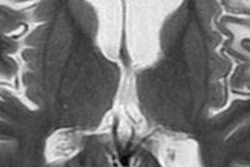
Click here for the French translation of this article.
PARIS - Radiologists would welcome a consensus on the risk to patients of gadolinium-based contrast agents (Gd-CA), yet the 2010 review by the European Medicines Agency appears to be leaving many radiologists scratching their heads over how to screen patients to minimize the risk of nephrogenic systemic fibrosis.
"No one is in favor of the idea of universal patient screening. It is too complicated and expensive," said Dr. Olivier Clément, who leads the working group for the French Society of Radiology (SFR) charged with providing guidance on the safe use of MRI contrast agents.
At the SFR's annual congress, les Journées Françaises de Radiologie (JFR), he spelled out the European decision for colleagues, then chaired a roundtable discussion that took a tentative step toward outlining recommendations for routine clinical practice. The speakers quickly seized on the confirmation by Sena et al that the six-question Choyke questionnaire has been shown to be 100% effective in screening patients to assess renal function before administering Gd-CA (American Journal of Radiology, August 2010, Vol. 195:2, pp. 424-428).
 Dr. Olivier Clément heads up the SFR's working group on the safety of MRI contrast agents.
Dr. Olivier Clément heads up the SFR's working group on the safety of MRI contrast agents.
While the low-cost questionnaire is likely to be included in SFR recommendations, it does not seem to provide all the answers, and the JFR discussion in the session outlined a range of issues to be dealt with by the task force. Some open questions regarding the Choyke questionnaire were raised by Dr. Elisabeth Schouman-Claeys from the Hôpital Bichat in Paris, including who should administer the quiz: the referring physician before the examination or the radiologist at the time of the exam. Radiologists should also be sure who has filled out the questionnaire for the patient.
The head of the nephrology group at the Hôpital de Brabois in Nancy, Dr. Luc Frimat, suggested the matter might be settled at the time of the examination by administering a simple urine test. "If there are proteins in the urine, then a level of renal dysfunction is obvious," he said, adding that the test costs less than 2 euros, compared with more expensive and time-consuming laboratory tests for renal insufficiency.
According to Clément, the potential is intriguing and worthy of further consideration, but the "yes-no" test result available instantly does not help the radiologist assess the nature of the patient's renal condition in order to decide which Gd-CA to use and at what dose. The current literature and clinical experience presents a complex matrix, with on one side, three patient risk groups describing renal function, and then along another axis, the three risk groups for contrast agents.
Shortly after the Austrian nephrologist Dr. Thomas Grobner dropped what Clément called "the bomb" that blew apart radiologists' understanding of the effects of gadolinium, the European Committee for Medicinal Products for Human Use (CHMP) distinguished three groups for the nine different chemical states of Gd-CA (Nephrology Dialusos Transplantation, April 2006, Vol. 21:4, pp. 1104-1108).
In his presentation, Clément reported that the July 2010 decision by European Medicines Agency formally fixed this assessment. The linear chelates gadoversetamide (OptiMark), gadodiamide (Omniscan), and gadopentetate dimeglumine (Magnevist) were considered high-risk; the linear chelates gadofosveset trisodium (Vasovist), gadoxetic acid disodium (Primovist), and gadobenate dimeglumine (MultiHance) were considered medium-risk; and macrocyclic chelates, including gadoterate meglumine (Dotarem), gadoteridol (ProHance), and gadobutrol (Gadovist), were considered low-risk.
The heart of the debate centers on the chelates considered medium-risk and then patients assessed as having a moderate-risk of renal insufficiency. "Is interrogation of the patient with the questionnaire enough? Shall we look for the patient's creatine levels?" he enquired. "It becomes complicated because it changes our habits and impacts the workflow."
Speaking with AuntMinnieEurope.com after the session, Clément offered examples of real-world conditions to illustrate the dilemma faced by radiologists.
"If you have 10 patients a day who are 40 years old and are being examined for uterine fibroids after embolization, then you know they do not have a renal insufficiency. Are we going to disrupt this workflow with a mandatory blood test?" he said. "If you know a patient has a renal insufficiency, but the schedule calls for that patient to stay within the seven-day interval between injections, then can you go forward and inject them anyway?"
If there is an indication that calls for a gadolinium injection, and a radiologist is injecting a low-risk macrocyclic agent, the question surrounds the dose that should be injected, added Clément. "For example, if renal insufficiency is below 30 mL/min, then you would only be able to use one dose," he noted.
Indicating the direction for the SFR group working on contrast agent recommendations for MRI, Clément said use of the Choyke questionnaire holds promise but requires further study.



















